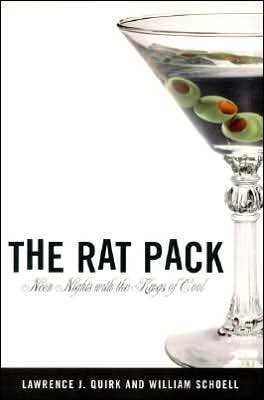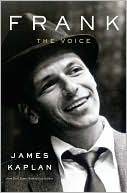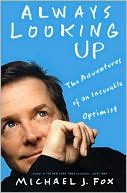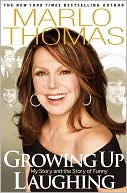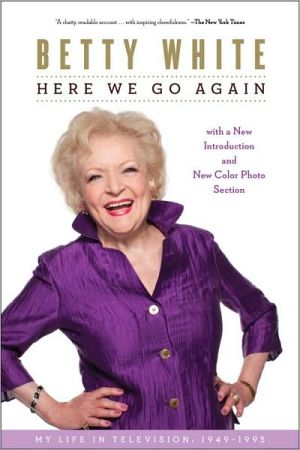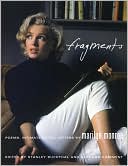Rat Pack: Neon Nights with the Kings of Cool
The Rat Pack — Frank Sinatra, Dean Martin, Sammy Davis, Jr., Peter Lawford, and Joey Bishop — had talent, money, and power to burn. They also had something else even more important.\ They had fun.
Search in google:
The Rat Pack—Frank Sinatra, Dean Martin, Sammy Davis, Jr., Peter Lawford, and Joey Bishop—had talent, money, and power to burn. They also had something else even more important. They had fun. Library Journal It used to be Frank Sinatra's world: Women were broads, the whole world was a smoking section, and booze flowed freely. And at no time was it more Frank's world than when the Rat Pack was in session. Sinatra was the center of the group, with Dean Martin and Sammy Davis Jr. completing the nucleus. Peter Lawford, Joey Bishop, and Shirley MacLaine, the only female admitted, comprised the periphery. Since Sinatra's 80th birthday in 1995 was commemorated by at least a half-dozen books, one might think that all that could possibly be written about Sinatra already has. Indeed, most of the material in these books has been seen before in the biographies and autobiographies of the various Rat Pack players, but each book finds its own angle. Quirk (author of a string of movie-star biographies) and Schoell (a novelist and author of books on film) concentrate a bit more on the various Rat Pack films. Levy (author of a Jerry Lewis biography and former editor at American Film) digs somewhat deeper into Sinatra's connections with politics and organized crime. In light of Sinatra's recent death, there will likely be demand for more material on him, and these boks will be welcome additions to circulating popular culture collections.Michael Colby, Univ. of California at Davis Lib.
The idea to make Ocean's 11 had actually originated with Peter Lawford, who bought a five-year-old screenplay with his wife Pat's money. "Why not" he said. "She could afford it." He suggested it to Sinatra, who thought it would be the perfect vehicle for him and his buddies. Studio head Jack Warner read the story and suggested it would be better to pull off the job in the script than to film the damn thing, but he knew it would fly since Sinatra was involved and therefore he gave the go-ahead.\ Now there was the problem of what to do with Peter Lawford. Sinatra had managed to get MGM to put him into Never So Few, but Jack Warner was another cookie altogether. Warner had bought the script from Peter and assumed that would be that. Luckily Warner allowed Frank's agent Burt Allenberg to put together the whole deal, although at first neither Allenberg nor Sinatra were interested in Lawford's participation. If Lawford hadn't married into the political Kennedy family, whose friendship Sinatra coveted, he probably would have gotten bupkiss; instead he got 17 percent of the profits and a part in the movie. He also got to join the act -- literally -- when Frank and the guys took over the stage at the Sands in Vegas while filming. As all of the action of Ocean's 11 took place in Las Vegas, Sinatra reasoned they might as well make the movie by day and perform at the Sands by night. By this time Dean Martin also owned a piece of the Sands. Who needed sleep?\ "We're not setting out to make Hamlet or Gone with the Wind," Frank told Sammy. "The idea is to hang out together, find fun with the broads, and have a great time. We gotta make pictures that people enjoy. Entertainment, period. We gotta have laughs." During this time Eisenhower, De Gaulle, and Khrushchev were planning to have their famous summit conference in Paris. Sinatra decided that he and his friends were going to have a "summit conference of cool." When the newspapers got wind of this they were full of stories about the "Rat Pack Summit." Sinatra had taken the term from Bogie's old group and applied it to himself and his friends.\ Virtually every hotel room in Las Vegas was sold out after Sinatra announced his summit. The Sands was packed solid and there was standing room only in the Copa Room where they performed. Eight security guards were hired to watch over Sinatra alone. Each night the boys would do two shows in the Copa Room, then sit in the lounge as the movie crew came in and set up for the early morning shooting. Nobody got any sleep. The day's shooting had to be over by four or five -- unusual in the motion picture business -- so that the boys could have dinner and get ready for their show again. On some days none of the five would report for filming before noon, just too exhausted to go to work. The Rat Packers would meet in the steam room at six after it was closed to the other guests. Henry Silva, who appeared in the film, said, "There was no sleeping -- there was fun time. You were in Vegas and you're young and there's all these girls. It was an electric excitement that permeated the town. Frank was the engine; he was the guy."\ During one show Frank noticed that Sammy was wearing his usual outré outfit while the rest of them were in tuxedos and began chewing him out, telling him he was all grown up now and had to wear a tux like the rest of them. "Go on now! Go and change and don't come back till you do!" For a panic-stricken moment Sammy wasn't sure if Frank was joking or not; the truth was Sinatra had taken his genuine feelings about Sammy's silly getups and, fueled by liquor from the rolling bar right up on the stage, decided to make an issue of it and get some comic mileage out of it at one and the same time. In other words, Frank was joking -- but he was serious. He had assumed the audience would go right along with him but he didn't reckon with Sammy's fans, who loved his colorful costumes, every ring, spangle, and pair of super-tight, basket-hugging jeans. That night he had on a pair of grey flannels with a silk ascot and blue blazer for accompaniment. Sammy resisted the temptation to slink off the stage and instead stood up to Sinatra: "Nobody tells me what to do!" Like Sinatra, he was joking -- but he was serious. The audience loved the way the underdog stood up to the Chairman of the Board and cheered the whole gag for as long as the two could milk it.\ One day Peter Lawford came across a newspaper article which in part read, "The quintet of Sinatra, Martin, Davis, Lawford and Bishop moved into Las Vegas in the form of an attack force with Sinatra as the nominal leader of their clan." This term -- "the clan" -- stuck, and for awhile the Rat Pack was simply known as the Clan, but Sammy, understandably, objected to the appellation. Frank insisted not too strenuously that he did not wish to be the leader of the group, but it looked like he was stuck with it. And Lawford could forget for awhile that he was not really an integral part of the group of which he was supposed to be a primary member; he had never been a "showman" or entertainer like the others. After a while, everyone started calling them the Rat Pack again and that was that.\ Sinatra liked the idea of putting all these guys who alone had considerable drawing power into one picture -- just like the "all star casts" in the movies of yesteryear -- and said it would be a good idea if they did several more of these Rat Pack movies. His "five-year plan," as he called it, would have them doing one movie a year for the next five years, which is not exactly the way it turned out, life and the movies being what they were.
\ Library JournalIt used to be Frank Sinatra's world: Women were broads, the whole world was a smoking section, and booze flowed freely. And at no time was it more Frank's world than when the Rat Pack was in session. Sinatra was the center of the group, with Dean Martin and Sammy Davis Jr. completing the nucleus. Peter Lawford, Joey Bishop, and Shirley MacLaine, the only female admitted, comprised the periphery. Since Sinatra's 80th birthday in 1995 was commemorated by at least a half-dozen books, one might think that all that could possibly be written about Sinatra already has. Indeed, most of the material in these books has been seen before in the biographies and autobiographies of the various Rat Pack players, but each book finds its own angle. Quirk author of a string of movie-star biographies and Schoell a novelist and author of books on film concentrate a bit more on the various Rat Pack films. Levy author of a Jerry Lewis biography and former editor at American Film digs somewhat deeper into Sinatra's connections with politics and organized crime. In light of Sinatra's recent death, there will likely be demand for more material on him, and these boks will be welcome additions to circulating popular culture collections.Michael Colby, Univ. of California at Davis Lib.\ \
